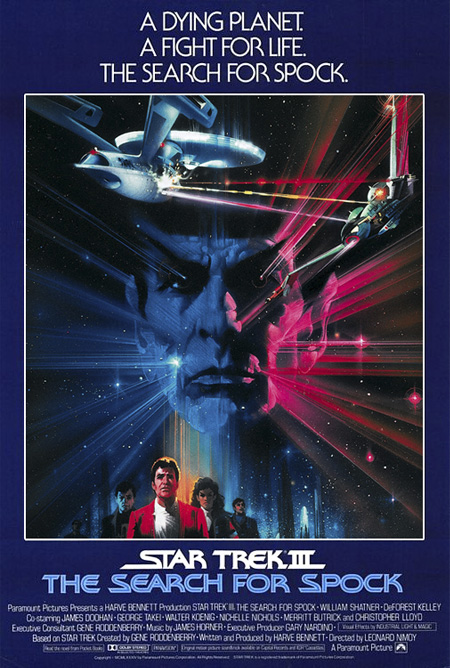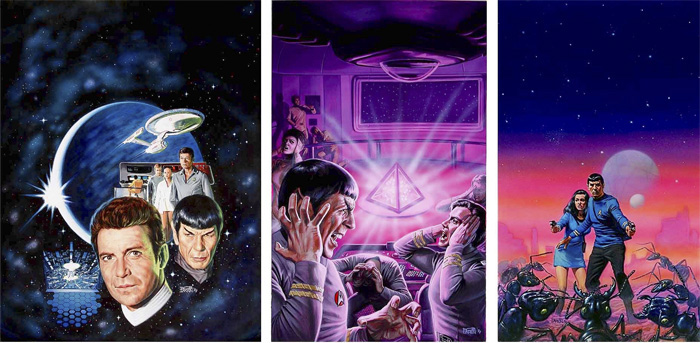By 1984, Leonard Nimoy was doing very different and exciting work. Among other projects, he was the host of a Nickelodeon TV series called “Lights, Camera, Action!” The show took viewers behind the scenes on TV and movie productions, and showed the kids how it was done. The series ran from 1982 through 1987. Nimoy chose not to cover Star Trek at all in his show, and his contract contained language that gave him that choice.

And then, in 1984, he wrote and directed the third Trekmovie, The Search for Spock. And so he made an exception, and devoted an episode of Lights! Camera! Action! to the film. To discuss it on-air, the show invited the movie’s publicist, Eddie Eagan, and the editor of the world’s bestselling sci-fi magazine, which happened to be me.
We did a brief run-through, chatting on set as Leonard gently probed for areas of interest to bring up once we began to record the show, which was done in a single take without a break. Little did I know that as we schmoozed, someone was writing down what I was saying. When we went “live,” I saw a person with cue cards standing next to the camera with the red light. My words were on them.
After introducing us, Nimoy proceeded to ask the very same questions on-air he had asked in the warm-up. He had long before mastered the art of reading from cue cards while making it appear that he was looking into the camera, as all good TV folks must. I had a problem, because if I looked at the camera, and therefore the cue cards, it meant I was looking away from Nimoy. So I eschewed the cue cards for the most part, because I knew what I wanted to say; what I had said earlier was pretty much what I had already written about in magazines and spoken about at conventions.

I explained that I found Star Trek to represent a new, more thoughtful and more mature look at science fiction. From its beginnings, with Buck Rogers, Flash Gordon, and the wonderful space-opera novels of E.E. “Doc” Smith, sci-fi had its core tropes, which I called the Three R’s: rayguns, robots, and rocketships. And, indeed, in his trendsetting homage to the heyday of sci-fi, George Lucas’s Star Wars universe still had those three elements at its core.

But Star Trek’s rayguns were mostly set on “stun”; robots were uncommon; and instead of a rocketship we were given a starship that was powered by a “warp-core engine.” And the heroes weren’t members of an army, they were explorers. They weren’t looking for new conquests, they sought new friends, alliances, information.
At its center was the great yin-yang of science fiction: the bold (and often rash) testosterone-laden Captain Kirk, and the logical, brilliant and insightful Mr. Spock. Together, they represented the full spectrum of what it means to be human. Separately, they were erratic, unbalanced. Together, they helped shape the future.
R.I. P. LEONARD NIMOY